BIO RAD Aurum Plasmid Mini Kit User manual
- Type
- User manual

Bio-Rad Laboratories, Inc.
2000 Alfred Nobel Dr.
Hercules, CA 94547 USA
(510) 741-1000
1-800-424-6723
4110111 Rev C

Aurum
™
Plasmid Mini Kit
Instruction Manual
For technical service, call your local Bio-Rad office, or
in the US, call 1-800-424-6723

Table of Contents
Section 1 Introduction . . . . . . . . . . . . . . . . . . . . . . . . . . . .1
Section 2 Kit Components . . . . . . . . . . . . . . . . . . . . . . . . .1
Section 3 Storage Conditions . . . . . . . . . . . . . . . . . . . . . . .2
Section 4 Necessary Supplies . . . . . . . . . . . . . . . . . . . . . .2
Section 5 Guidelines for Using the
Aurum Plasmid Mini Kit . . . . . . . . . . . . . . . . . . . . .3
Section 6 Protocol . . . . . . . . . . . . . . . . . . . . . . . . . . . . . . .5
Section 7 Troubleshooting Guide . . . . . . . . . . . . . . . . . . .11
Section 8 Ordering Information . . . . . . . . . . . . . . . . . . . .13

Section 1
Introduction
The new Aurum plasmid mini kit is optimized for the purification of up to 20 µg
of plasmid DNA, rapidly and inexpensively, without the use of toxic reagents or
alcohol precipitations. The use of membranes to bind and purify plasmid DNA,
in combination with an optimized column design, minimizes handling and
allows plasmid purification to be carried out in either a vacuum or spin format.
In either format, the final elution is carried out in a microcentrifuge. Plasmid
DNA purified with the Aurum plasmid mini kit is eluted into a small volume of
aqueous buffer and is free of salts, bacterial chromosomal DNA, and RNA.
The exceptional purity of the plasmid produced by this system makes it ideal
for use in automated fluorescent sequencing and in any other molecular
biology application.
Section 2
Kit Components
The Aurum plasmid mini kit contains the following components:
resuspension solution 25 ml
lysis solution 25 ml
neutralization solution 40 ml
wash solution 25 ml (5x concentrate)
elution solution 16 ml
plasmid mini columns 100
2 ml capless wash tubes 100
The solutions are specifically formulated for the Aurum plasmid mini kit. They
are NOT interchangeable with solutions used in other kits or protocols.
1

Section 3
Storage Conditions
Solutions and columns should be stored at room temperature. If
precipitation is observed in any solution, warm solution to 37ºC to
redissolve, and allow to return to room temperature before use. Do not
expose any of the solutions to temperatures above 37ºC. If the kit is
used infrequently, storage of the resuspension solution at 4ºC is
recommended to preserve the RNase.
Section 4
Necessary Supplies
Equipment and supplies to be provided by the customer:
• 1.5–2.0 ml capped microcentrifuge tubes 200
• 95–100% ethanol, or reagent-grade (denatured) ethanol, 100 ml
• Microcentrifuge (12,000 x g)
Additional equipment required for vacuum format:
• Bio-Rad Aurum vacuum manifold with vacuum regulator and
column adaptor plate (Cat. #732-6470), or other vacuum manifold
with luer fittings (Figure 1).
Note: Please read Section 7, Instrument Setup and Use for the
Column Adaptor Plate in the Aurum vacuum manifold instruction
manual for proper vacuum setup conditions.
• Vacuum source (capability of -20 to -23" Hg required)
2

Section 5
Guidelines for Using the Aurum
Plasmid Mini Kit
Please read the following guidelines before starting the plasmid purification.
Bacterial Growth Guidelines:
• The Aurum plasmid mini kit can process cultures grown in a variety of
different broths, such as LB (Luria-Bertani broth), LBG (LB + 2% glycerol),
SB (Super Broth) and 2x YT. For optimum performance, LB or LBG is
recommended for most strains of E. coli. TB (Terrific Broth) cultures
generally produce lower plasmid yields of more variable quality and are
therefore not recommended.
• For optimum plasmid quality, plasmid propagation in an endA
-
host, such as
DH5a, JM109, or XL1-Blue, is recommended.
• Spectrophotometric determination of culture density is a REQUIREMENT for
optimum performance. Optimized concentrations of purified plasmid will
generally result with most high copy number constructs, bacterial hosts and
3
Fig. 1. Aurum vacuum manifold

media when 10–12 OD•ml of bacteria are processed per column, although
smaller amounts of culture may also be processed.
To determine the density of a bacterial culture (OD
600
), combine 50 µl of
bacterial culture with 950 µl growth medium (1:20 dilution). Use the growth
medium as a blank and take the spectrophotometric reading at l = 600 nm.
Multiply this figure by 20 to calculate the bacterial concentration. Depending
upon the OD
600
value, a specific volume of the culture will be selected to
provide an optimum amount of bacteria for processing. To calculate the
volume of bacterial culture required for plasmid purification, use the following
equation:
(OD
600
of undiluted culture)* x (culture volume in ml) = #OD•ml
For example, 12 OD•ml of bacteria would require 2 ml of an undiluted
culture with an OD
600
= 6.
• The protocol is designed to process up to 12 OD•ml of bacterial host.
*OD
600
is equivalent to approximately 8 x 10
8
cells/ml
Vacuum Guidelines:
• The recommended operating range is -20 to -23 inches of mercury (" Hg).
Do not exceed -25" Hg when performing this protocol. A vacuum regulator
is required to establish the appropriate vacuum pressure (Figure 2).
Table 1. Pressure unit conversions
To convert from inches of mercury (" Hg) to: Multiply by:
millimeters of mercury or torr (mm Hg, torr) 25.4
millibar (mbar) 33.85
atmospheres (atm) 0.03342
pounds per square inch (psi) 0.4912
kilopascals (kPa) 3.385
4

Section 6
Protocol
Vacuum Format
This procedure requires the Bio-Rad Aurum vacuum manifold and column
adaptor plate (Cat. #732-6470), or any vacuum manifold with luer fittings. For
proper vacuum setup conditions, please read Instrument Setup and Use
for the Column Adaptor Plate in the vacuum manifold instruction manual,
and see Fig. 4. All centrifugation steps are performed at maximum speed
( 12,000 x g) under ambient conditions, with any commercially available
microcentrifuge which can accommodate 1.5 ml and 2.0 ml tubes. Please read
the section "Guidelines for Using the Aurum Plasmid Mini Kit" before
proceeding.
1. Transfer up to 12 OD•ml of plasmid-containing bacterial host to a 1.5–2.0
ml capped microcentrifuge tube (not provided). Pellet the cells by
centrifugation for 1 min. Remove all supernatant by decanting or pipetting.
2. Add 250 µl of resuspension solution and vortex or pipet up and down until
the cell pellet is completely resuspended.
3. Add 250 µl of lysis solution and mix by inverting the capped tube briskly
6–8 times. DO NOT VORTEX OR SHAKE. The solution should become
viscous and slightly clear.
5
Fig. 2. Vacuum regulator with clear representation of the gauge

6
Fig. 3a. Vacuum setup
conditions for the Aurum
plasmid mini kit
Fig. 3b. Connection of Aurum
mini column to column adaptor
plate
Aurum mini column
Column adaptor plate
Manifold top
Waste collection tray
A stage
Manifold base
Fig. 4. Vacuum setup conditions
Vacuum source
Vaccum regulator
Filter flask
Vacuum manifold

7
Note: The neutralization solution should be added within 5 min after lysis.
4. Add 350 µl of neutralization solution and mix by inverting the capped tube
briskly 6–8 times. DO NOT VORTEX OR SHAKE. A visible precipitate should
form.
5. Centrifuge the neutralized lysate for 5 min. A compact white debris pellet will
form along the side or at the bottom of the tube.
6. While centrifuging the lysate, attach a plasmid mini column to the luer fitting of
the column adaptor plate on the Aurum vacuum manifold or to a compatible
vacuum manifold. The vacuum source should be turned off, and the vacuum
regulator should be completely open.
7. By decanting or pipetting, transfer the cleared lysate from step 5 to the
plasmid mini column. Turn the vacuum on and adjust to -20 to -23" Hg by
closing the vacuum regulator. Continue to apply vacuum until all of the lysate
has passed through the column. Open the vacuum regulator until the gauge
indicates 0" Hg.
8. The wash solution is supplied as a 5x concentrate. Add 4 volumes (100 ml) of
95–100% ethanol or reagent-grade (denatured) ethanol before initial use.
9. Add 750 µl of wash solution to the column and close the vacuum regulator
dial until the gauge indicates -20 to -23" Hg. Continue to apply the vacuum
until all wash solution has passed through the columns. Open the vacuum
regulator until the gauge indicates 0" Hg.
10. Transfer the plasmid mini column to a 2 ml capless wash tube (provided) and
centrifuge for 1 min to remove residual wash solution.
11. Transfer the plasmid mini column to a 1.5–2.0 ml capped microcentrifuge
tube (not provided). Add 50 µl of elution solution onto the membrane stack
at the base of the column and allow 1 min for the solution to saturate the
membranes. Centrifuge for 1 min to elute the plasmid.
12. Discard the mini column and store the eluted DNA at 4ºC.
A protocol overview is available (see Figure 5).

8
Fig. 5. Aurum plasmid mini protocol overview: vacuum format
Growth and Isolation
1. Grow 1–5 ml bacterial culture overnight or
16 hr.
2. Measure A
600
(if higher yield required).
3. Transfer an appropriate volume of culture to
a capped 2 ml tube. Centrifuge and
decant supernatant.
4. Add 250 µl resuspension solution; vortex.
5. Add 250 µl lysis solution; invert 6–8x.
6. Add 350 µl neutralization solution; invert 6–8x.
7. Centrifuge 5 min to pellet cell debris.
Purification on Aurum or
Comparable Manifold
(See exploded view for proper setup of
manifold.)
8. Transfer cleared lysate (supernatant) to mini
spin/vac column.
9. Apply vacuum at -20 to -23" Hg to bind
plasmid DNA. Turn vacuum off.
10. Add 750 µl wash solution and reapply
vacuum until all liquid has passed through
column.
11. Transfer mini spin/vac column to a 2 ml wash
tube. Spin 1 min to remove residual wash.
Collection of Purified Samples
12. Transfer mini spin/vac column to a clean
1.5–2.0 ml capped tube.
13. Add 50 µl elution solution. Let stand 1 min
and then centrifuge 1 min to elute.
14. Purified DNA is ready to use or can be
stored at 4°C.
Bulletin 2663 US/EG Rev B 01-568 0901
4110116 Rev A
Aurum Plasmid Mini Kit: Cat. #732-6400
For more information, call Technical Services
at 1-800-424-6723.
350 µl
neutralization
solution
250 µl
lysis solution
250 µl
resuspension
solution
Aurum
™
Plasmid
Mini Kit:
Vacuum Format
Protocol Overview
For complete protocol, consult instruction manual.
Invert 6–8x
Vortex
Invert 6–8x
50 µl
elution
solution
Transfer
cleared lysate
750 µl
wash solution
™

9
Spin Format
The Aurum plasmid mini kit can be used with any commercially available
microcentrifuge that can accommodate 1.5 ml and 2.0 ml tubes. All centrifugation
steps are performed at maximum speed ( 12,000 x g) under ambient conditions.
Please read the previous section "Guidelines for Using the Aurum Plasmid Mini
Kit" before proceeding.
1. Transfer up to 12 OD•ml of plasmid-containing bacterial host to a 1.5–2.0 ml
capped microcentrifuge tube (not provided). Pellet the cells by centrifugation
for 1 min. Remove all supernatant by decanting or pipetting.
2. Add 250 µl of resuspension solution and vortex or pipet up and down until
the cell pellet is completely resuspended.
3. Add 250 µl of lysis solution and mix by inverting the capped tube briskly
6–8 times. DO NOT VORTEX OR SHAKE. The solution should become
viscous and slightly clear.
Note: The neutralization solution should be added within 5 min. after lysis.
4. Add 350 µl of neutralization solution and mix by inverting the capped tube
briskly 6–8 times. DO NOT VORTEX OR SHAKE. A visible precipitate should
form.
5. Centrifuge the neutralized lysate for 5 min. A compact white debris pellet will
form along the side or at the bottom of the tube. The supernatant or cleared
lysate contains the plasmid DNA.
6. While centrifuging the lysate, insert a plasmid mini column into a 2 ml
capless wash tube (provided).
7. By decanting or pipetting, transfer the cleared lysate from step 5 to the
plasmid mini column. Centrifuge for 1 min.
8. The wash solution is supplied as a 5x concentrate. Add 4 volumes (100 ml)
of 95–100% ethanol or reagent-grade (denatured) ethanol before initial use.
9. Remove the plasmid mini column from the wash tube. Discard the filtrate
from the tube, and replace the column into the same wash tube. Add 750 µl
of wash solution and centrifuge for 1 min.
10. Discard the wash solution from the tube, and replace the column into the
same wash tube. Centrifuge for 1 additional minute to remove residual wash
solution.
11. Transfer the plasmid mini column to a 1.5–2.0 ml capped microcentrifuge
tube (not provided). Add 50 µl of elution solution onto the membrane stack
at the base of the column and allow 1 min for the solution to saturate the
membranes. Centrifuge for 1 min to elute the plasmid.
12. Discard the mini column and store the eluted DNA at 4ºC.
A protocol overview is available (see Figure 6).

10
Fig. 6. Aurum plasmid mini protocol overview: spin format
Growth and Isolation
1. Grow 1–5 ml bacterial culture overnight or
16 hr.
2. Measure A
600
(if higher yield required).
3. Transfer an appropriate volume of culture to
a capped 2 ml tube. Centrifuge and
decant supernatant.
4. Add 250 µl resuspension solution; vortex.
5. Add 250 µl lysis solution; invert 6–8x.
6. Add 350 µl neutralization solution; invert 6–8x.
7. Centrifuge 5 min to pellet cell debris.
Purification
8. Transfer cleared lysate (supernatant) to
mini spin/vac column.
9. Centrifuge 1 min to bind plasmid DNA.
Decant flow-through.
10. Add 750 µl wash solution and
centrifuge 1 min. Decant flow-through.
11. Centrifuge additional 1 min to remove
residual wash solution.
Collection of Purified Samples
12. Transfer mini spin/vac column to a clean
1.5–2.0 ml capped tube.
13. Add 50 µl elution solution. Let stand 1 min
and then centrifuge 1 min to elute.
14. Purified DNA is ready to use or can be
stored at 4°C.
Aurum Plasmid Mini Kit: Cat. #732-6400
For more information, call Technical Services
at 1-800-424-6723.
750 µl
wash
solution
50 µl
elution
solution
Aurum
™
Plasmid
Mini Kit:
Spin Format
Protocol Overview
For complete protocol, consult instruction manual.
Transfer cleared lysate
350 µl
neutralization
solution
250 µl
lysis solution
250 µl
resuspension
solution
Invert 6–8x
Vortex
Invert 6–8x
™

11
Section 7
Troubleshooting Guide
Problem Possible Cause Possible Solution
Low plasmid yields Low copy number Use high copy number
plasmid constructs
Poor plasmid Inoculate large-scale
propagation in culture cultures with overnight
cultures generated from
fresh colonies grown on
a selective medium
Determine optimum
growth and plasmid
propagation times for
culture depending upon
host, broth, etc.
Check age and
concentration of
antibiotic
Excessive amount of Determine OD
600
of
bacteria processed culture and reduce
OD•ml of bacteria
processed to ensure
efficient lysis
Incomplete resuspension Ensure that the bacterial
of bacteria pellet pellet is completely
resuspended prior to
addition of lysis solution
Excessive drying of See protocol. Do not
column membranes exceed 1 min
prior to elution centrifugation.
Insufficient ethanol Check that correct
added to wash solution amount was added
concentrate

12
Problem Possible Cause Possible Solution
Bacterial DNA Excessive amount of Determine OD
600
of
contamination bacteria processed culture and do not
exceed 12 OD•ml of
bacteria processed
Excessive agitation of Do not shake or vortex
lysate lysate after addition of
lysis solution
RNA contamination Excessive amount of Determine OD
600
of
bacteria processed culture and do not
exceed 12 OD•ml of
bacteria processed
Compromised RNase Replace kit
activity due to age or
storage conditions
Low A
260/280
Excessive amount of Determine OD
600
of
bacteria processed culture and do not
exceed 12 OD•ml of
bacteria processed
Incomplete suspension Ensure that the bacterial
of bacterial pellet pellet is completely
resuspended prior to
addition of lysis solution
Incomplete mixing of Invert briskly 6–8 times
resuspension, lysis, and after the addition of each
neutralization solutions reagent; check to ensure
homogeneous mixing
Incomplete washing of Use recommended wash
column membranes solution volumes. Add
correct amount of ethanol
to wash solution
concentrate.

13
Problem Possible Cause Possible Solution
More than one band Presence of multimers – Try different host or
on analytical gel typical and variable growth conditions
depending upon plasmid,
bacterial host, etc.
Nicking due to Use endA
-
host such as
endonuclease activity JM109, DH5a, or
XL1-Blue
Prolonged exposure to Add neutralization solution
alkaline conditions within 5 min after
addition of lysis solution
Plasmid nicked/ Use of endA
+
bacterial Use endA
-
host such as
degraded host JM109, DH5a, or
XL1-Blue
Plasmid prep Plasmid nicked, degraded Check integrity of plasmid
performs poorly in or denatured on an analytical gel
enzymatic reactions
Use endA
-
host
Section 8
Ordering Information
Catalog # Description
732-6470 Aurum Vacuum Manifold, includes column adaptor plate,
4 replacement luer caps, A and B stages, waste collection
tray, vacuum regulator and gauge, tubing, protocol overview,
and instruction manual
732-6400 Aurum Plasmid Mini Kit, 100 preps, includes 100
plasmid binding columns, 100 capless collection tubes (2.0
ml), reagents, protocol overview, and instruction manual
-
 1
1
-
 2
2
-
 3
3
-
 4
4
-
 5
5
-
 6
6
-
 7
7
-
 8
8
-
 9
9
-
 10
10
-
 11
11
-
 12
12
-
 13
13
-
 14
14
-
 15
15
-
 16
16
BIO RAD Aurum Plasmid Mini Kit User manual
- Type
- User manual
Ask a question and I''ll find the answer in the document
Finding information in a document is now easier with AI
Related papers
-
 BIO RAD Aurum User manual
BIO RAD Aurum User manual
-
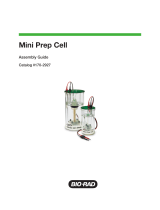 BIO RAD Mini Prep Cell Assembly Manual
BIO RAD Mini Prep Cell Assembly Manual
-
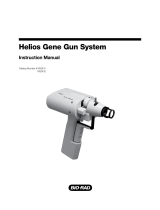 BIO RAD Helios Gene Gun System User manual
BIO RAD Helios Gene Gun System User manual
-
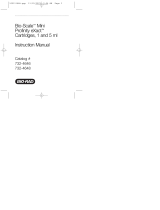 BIO RAD Bio-Scale User manual
BIO RAD Bio-Scale User manual
-
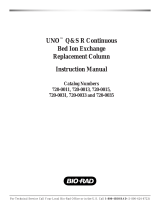 BIO RAD UNO 720-0011 User manual
BIO RAD UNO 720-0011 User manual
-
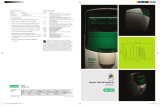 BIO RAD Experion DNA 12K analysis kits Quick Manual
BIO RAD Experion DNA 12K analysis kits Quick Manual
-
 BIO RAD Experion User Quick Manual
BIO RAD Experion User Quick Manual
-
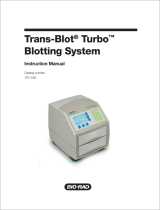 BIO RAD Trans-Blot Turbo User manual
BIO RAD Trans-Blot Turbo User manual
-
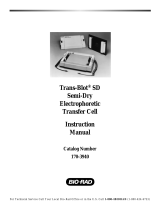 BIO RAD 200/2.0 User manual
BIO RAD 200/2.0 User manual
Other documents
-
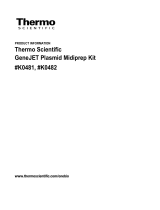 Thermo Fisher Scientific GeneJET Plasmid Midiprep Kit, K0481 User guide
Thermo Fisher Scientific GeneJET Plasmid Midiprep Kit, K0481 User guide
-
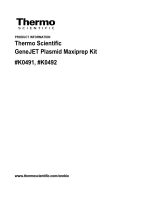 Thermo Fisher Scientific GeneJET Plasmid Maxiprep Kit, K0491 User guide
Thermo Fisher Scientific GeneJET Plasmid Maxiprep Kit, K0491 User guide
-
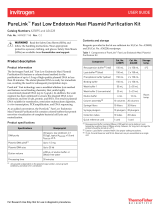 Thermo Fisher Scientific PureLink Fast Low User guide
Thermo Fisher Scientific PureLink Fast Low User guide
-
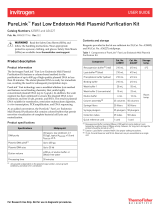 Thermo Fisher Scientific PureLink Fast Low User guide
Thermo Fisher Scientific PureLink Fast Low User guide
-
GALENVS VR0096 User guide
-
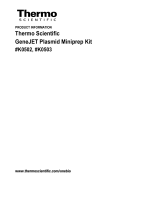 Thermo Fisher Scientific GeneJET Plasmid Miniprep Kit, K0502 User guide
Thermo Fisher Scientific GeneJET Plasmid Miniprep Kit, K0502 User guide
-
GALENVS WW0024 User guide
-
GALENVS UP0096-12 User guide
-
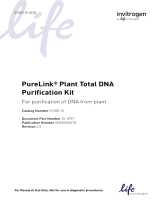 Thermo Fisher Scientific PureLink Plant Total DNA Purification Kit User guide
Thermo Fisher Scientific PureLink Plant Total DNA Purification Kit User guide
-
 Thermo Fisher Scientific MagJET Plasmid DNA Kit User guide
Thermo Fisher Scientific MagJET Plasmid DNA Kit User guide































